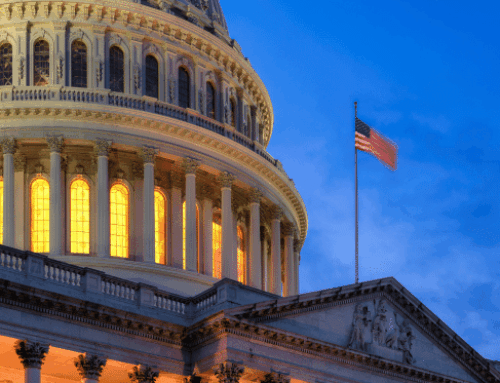The Presidential transition is ongoing and Republican leadership is moving more work into the next Congress when there will be a member of their own party in the White House.
So as Republican Congressional leaders look at priorities for this lame duck session, they are looking to do as little as possible to allow them what they anticipate will be unfettered ability to advance the Republican agenda once President-elect Trump takes office.
In practical terms, this means that before they adjourn the 114th Congress, a short-term, stopgap funding measure will be brought to the floor, giving agencies the same level of funding as in fiscal year 2016, which ended on September 30. We will likely also see an emergency supplemental funding bill for defense and disasters, but the leaders of the tax writing committees have decided that they won’t pursue extending dozens of expiring tax provisions and will instead consider them in the context of comprehensive tax reform next year. We don’t shed a tear for the extenders package, but the light schedule of this lame duck puts a lot of pressure on the 115th Congress right out of the gate.
In addition to finishing fiscal year 2017 spending, Congressional leadership is considering adopting both a fiscal year 2017 budget and a fiscal year 2018 budget next year. Adopting a budget when already well into the fiscal year may sound like a fool’s errand, but there is a method to their madness. Two budgets will get them two opportunities to pursue budget reconciliation. The Congressional Research Service describes reconciliation thusly: “The chief purpose of the reconciliation process is to enhance Congress’s ability to change current law in order to bring revenue and spending levels into conformity with the policies of the budget resolution.” Simply put, budget reconciliation is a way to force through spending and revenue measures with a majority vote in the Senate – no filibuster allowed. That’s the way the Affordable Care Act (aka Obamacare) was enacted and that’s the way they are going to try to get rid of it. Tax cuts under President Bush were also enacted this way and tax reform may be the subject of a second reconciliation, hence the delay in considering the aforementioned extenders.
There are several tax reform proposals swirling around, most notably a couple from President-elect Trump and another from House Ways and Means Chair Brady (R-TX). The Senate Finance Committee released working group pieces on tax reform last summer.
It’s been 30 years since comprehensive tax reform was adopted. And that experience demonstrated that there needed to be leadership from the President and a willingness to work on a bipartisan basis in Congress. That way all have a stake in success. Going the reconciliation route removes the need for bipartisanship but could affect the durability of the effort – just look at the likely fate of the Affordable Care Act.
President-elect Trump has also called for a trillion dollar infrastructure package. (Even adjusted for inflation that’s more than the $830 billion stimulus at the beginning of the Obama Administration). It’s not clear how its costs would be offset or even if it would be offset. One idea circulating is to use the one-time revenue from the repatriation of the estimated more than $2 trillion worth of corporate profits parked overseas. Instead of paying the current 35 percent corporate tax rate, the money could be brought home at a 10 percent rate. This proposal will have to stand the scrutiny of conservatives in Congress, some of whom are skeptical. Others would like to use the revenue to further reduce tax rates.
One thing that we can be sure of – there will be a fight over the budget caps imposed by the Bipartisan Budget Act of 2015 and the underlying Budget Control Act of 2011. The President-elect wants to scrap the caps on the defense side, and has talked about making new investments in Homeland Security, which could run up against the non-defense discretionary side of the caps. If the new Congress tries to repeal the budget caps on the defense side alone, they will likely face a filibuster from the Senate Democrats.
It’s also unclear how much of this will be done through deficit spending. According to the Congressional Budget Office, the FY16 deficit will be $549 billion, or 3.0 percent of GDP—still considerably higher than the deficit recorded for 2015, which was 2.5 percent of GDP in an apples-to-apples comparison. The budget caps were estimated to save more than $1 trillion over the next several years.
And lest we forget, the Presidential budget request is always delayed at the beginning of any administration. This is exacerbated when there’s a change in party. With an already compressed budget window, Congress will be hard pressed to complete their work – all twelve spending bills done individually and on time. There’s a lot on their plate, but having control of the Executive and Legislative branches, Republicans are going to have to demonstrate they can govern. And while it might be inconvenient, fiscal responsibility has to be part of the equation.








